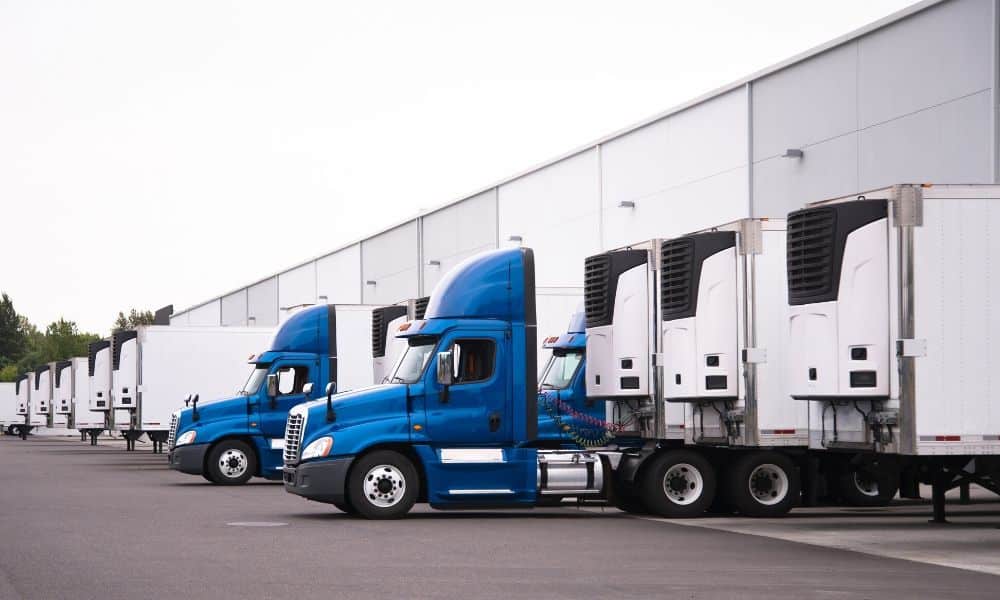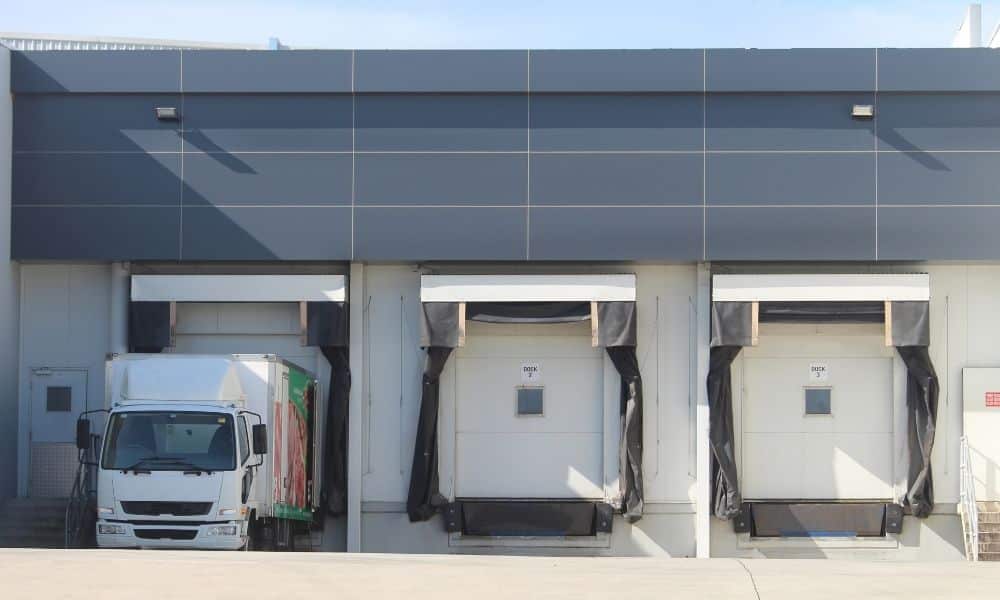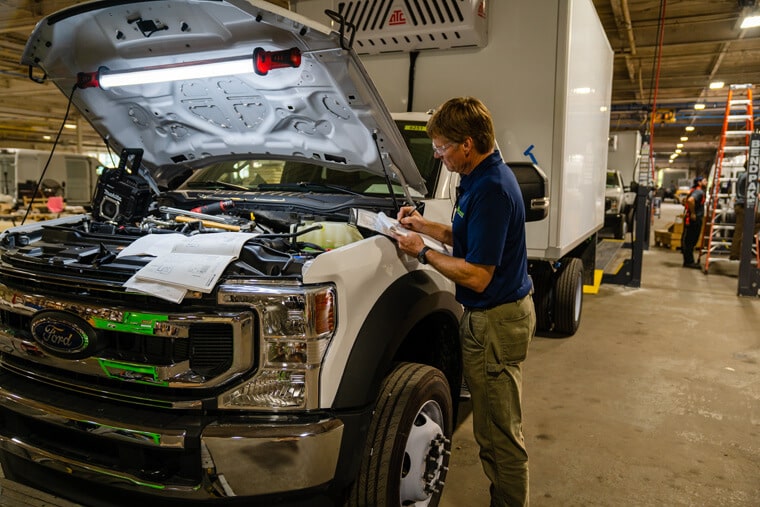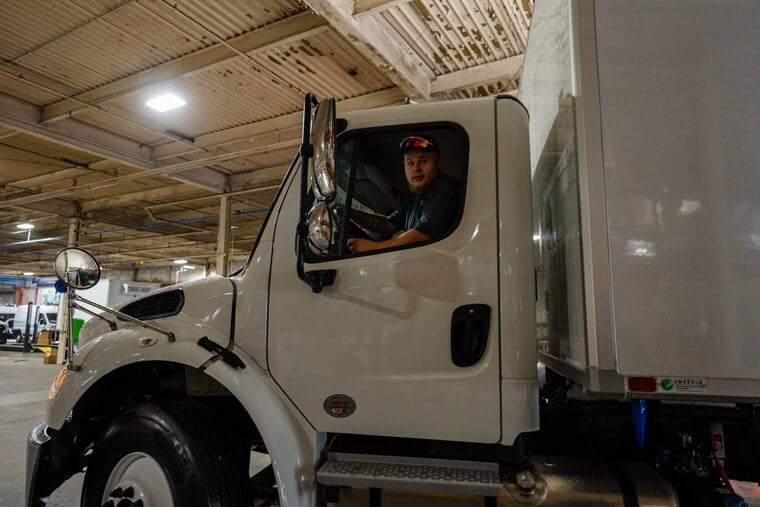
Your Guide to Proper Reefer Loading Practices
Joe Dickman | March 12th, 2020
Transitioning perishable, temperature-sensitive products from one place to another is difficult. Every link in the cold supply chain, from manufacturing or harvesting to delivery to a store, needs to hold to ensure the product doesn’t spoil. Too often, the loading process, when workers expose goods to uneven temperatures, presents the biggest threat to the cold chain’s integrity. If done correctly, though, the loading process ensures your wares maintain consistent temperature. If you’re in the business of transporting cold product, here’s your guide to proper reefer loading practices with practical steps for everything from start to finish.
Every Product Is Different
Before we go into specifics about loading, it’s important to recognize how product differences matter when preparing a loading strategy.
Temperature Differences
Chilling Injury
Many different products must ship along the cold chain, including many fruits and vegetables that vary in how each species tolerates cold temperatures. It’s vital to keep them cool, but you must also not chill or freeze product. Chilling injury is a form of deterioration caused by exposure to too-cold but above-freezing temperatures. The threshold below which the product will be “too-cold” is the fruit or vegetable’s designated lowest safe temperature. These designations range from close to freezing (32 degrees Fahrenheit or zero degrees Celsius) to as high as 55 degrees Fahrenheit. For example, asparagus and cantaloupes can chill down to around 35 degrees Fahrenheit while tomatoes and bananas cannot chill lower than 55 degrees Fahrenheit or they will sustain damage. Some produce can withstand dipping below this chilling point for a short time, but others—such as bananas—deteriorate quickly in the cold.
Freezing Sensitivity
Just as some fruits and vegetables can rebound from chilling while others cannot, produce species’ responses to freezing varies. Generally, freezing damages produce by compromising the microscopic cell walls that make up the plant, which becomes apparent when the product thaws. It takes on a limp, mushy appearance and texture and is not fresh upon consumption. Some particularly at-risk produce are bananas, avocados, and lettuce, while kale, parsnips, and turnips are all less sensitive to freezing.
Respiring vs. Non-Respiring Product
A third difference between products you may ship is how it heats up. Respiring organic products, named according to their continued metabolic function after harvest, produce heat as a byproduct of their metabolic processes. This heat energy warms the innermost part of the product before proceeding outward. This is counter to non-respiring products, which only heat up from the outside in. To protect respiring product, you must regulate airflow carefully.
Refrigerated Truck Preparation
Given these differences, you need to take care to prepare your truck or van for successful loading and transport before the product goes anywhere near the vehicle.
Place Thermometers Strategically
The first reminder is to place thermometers so you can easily determine cargo temperature. Three thermometers should allow for thorough coverage. Place one closest to the door, another in the middle, and your last in the rear. Be sure none touch the walls of your truck to preserve accuracy.
Clean
One proper reefer loading practice is to clean thoroughly. A consistently clean vehicle is key to preventing contamination and stopping bacteria growth. Regulations also mandate a certain cleanliness level. When working with meat, for example, even indirect contact with the interior requires subsequent cleaning. Spraying your interior with heated pressurized water without accompanying chemical cleaning agents removes residual substances without introducing chemical odors. Take special care to perform a deep clean after transporting an especially odorous product, such as fish. This prevents your next product, which may be sensitive to odor, from absorbing the smell.
Maintain Vehicle
Regular vehicle maintenance is essential. Routinely check that door seals are in place. If any are defective, this completely compromises your ability to regulate temperature. Look at other facets of the container, too—if there are any wall punctures or corrosion, your refrigerating integrity lowers. You also need to carefully watch elements inside the reefer, such as the air ducts that deliver conditioned air. You load your product according to carefully drawn models of airflow and temperature regulation. The last thing you want is for a hole in your air duct to disrupt how the emitted conditioned air travels because this also compromises your cooling capacity. One final tip—be sure that your refrigeration hardware functions as it should before loading. Run it for about twenty minutes before loading your product and watch the temperature readings.
Precooling
If you were to load your product and cool the interior after, you would lose precious hours of cooling and risk damaging product when its temperature drops. It’s crucial to prevent these temperature losses whenever possible. To this end, you should precool your vehicle. Precool your truck or van near the carrying temperature when it arrives for loading. This prevents overtaxing your refrigeration system, which is a risk when cooling it to the proper temperature directly from extreme heat. Stabilizing your vehicle at a cooled temperature is your first step, but you don’t need to cool it to the product’s required temperature yet. In fact, you should avoid reaching temperatures at which water vapor will condense onto the interior’s walls. If this occurs, you risk compromising product packaging. To avoid this, don’t precool to a too-low temperature and don’t run your refrigeration equipment when loading product from an open dock.
Loading Your Product
When physically bringing product into your truck, use these best practices.
Pallet Loading
To limit how much product you lose from transfer accidents, load using a rigid pallet structure. Corrugated fiberboard affords a supported structure that helps the transfer from forklift to truck go smoothly. To make your product more pallet-able, consider unitizing your product, or assembling individual units into a larger structured unit. This generally stabilizes your loading process.
Plan Your Loading Pattern
Executing a thought-out loading pattern is also important because it can cut down on freezing or overheating while maximizing airflow. Pyramid stacking allows for very limited contact with interior walls. Similarly, centralized loads, if braced appropriately, don’t touch interior walls. Offset loading limits wall contact for many packages while ensuring air circulation along the side walls.
Brace Your Product
Additionally, make sure there is bracing in place to prevent product from shifting during transport and blocking or diverting the passage of air. These braces are most important along the rear where product could threaten air circulation the most if it were to shift.
Be Efficient About Loading
When loading, limiting the time you spend exposing your reefer and product to open air helps maintain freshness. Follow a loading checklist. Ensure workers coordinate well with one another and know how much clearance to leave from interior walls and generally prepare for the loading process beforehand. You won’t want to have to address confusion about loading when the product is ready to go in.
If you need the proper equipment to transport your particular product, contact Emerald Transportation Solutions about purchasing a refrigerated delivery van or truck. Our team can answer any questions you have about our building process or how your needs fit our offerings.
Related Articles
Contact Us
Feel Free To Contact Us If You Have Any Questions
What does under DOT mean?
Questions regarding DOT requirements come up often. 10,000 lbs GVW (gross vehicle weight) and over are commercial vehicles that fall under the Department of Transportation regulatory requirements.
What is the difference between GVW and payload?
GVW or Gross Vehicle Weight is the entire weight of the vehicle including the payload. The payload weight represents the amount of cargo you are hauling.
What is a self-powered unit and a vehicle-powered unit?
A self-powered unit has its own fuel source and will run independent of the truck. This is the heaviest and most expensive option. While vehicle-powered units run off the engine via a compressor mounted on the engine. These are less expensive and lighter in weight but you must run the truck or plug the electric standby into shore power.
What does K-factor mean and why is that important?
K-factor is a term that stands for the overall insulating value of the container (truck body). Quite simply the lower the K-factor the better the truck body will be able to maintain a given temperature and require less energy to do so.
How much lighter is a Poly Van vs a US spec body?
Poly Van bodies are very light. On average we estimate we are 75-150 lbs per foot lighter than a traditional sheet and post foamed in place body. These weight savings translates to less fuel burn and less CO2 emissions, along with added payload, the most important benefit.







